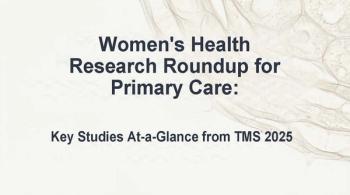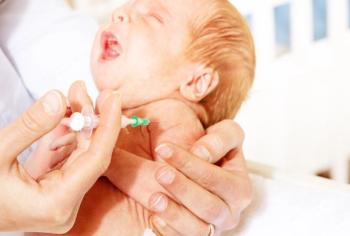
Heart Benefits of Fish Trump Mercury and PCB Exposures
BOSTON -- Compared with the cardiovascular benefits of finfish and shellfish, fears of mercury and polychlorinated biphenyls (PCBs) should be considered dead in the water, according to a review of the evidence.
BOSTON, Oct. 17 -- Compared with the cardiovascular benefits of finfish and shellfish, fears of mercury and polychlorinated biphenyls (PCBs) should be considered dead in the water, according to a review of the evidence.
The coronary heart disease benefit was hundreds to a thousand times greater for salmon than the lifetime cancer risk from contaminants in the fish for adults, reported Dariush Mozaffarian, M.D., Dr.P.H., and Eric B. Rimm, Sc.D., both of Brigham and Women's Hospital and Harvard Medical School, in the Oct. 18 issue of the Journal of the American Medical Association.
"The public is faced with seemingly conflicting reports on the risks and benefits of fish intake," the investigators wrote, "resulting in controversy and confusion over the role of fish consumption in a healthy diet."
However, "based on strength of evidence and potential magnitudes of effect, the benefits of modest fish consumption--one to two servings per week--outweigh the risks among adults and, excepting a few selected fish species, among women of childbearing age," they concluded on the basis of a systematic review.
The researchers found the cardiovascular benefit to be 100- to 370-fold greater than cancer risk for farmed salmon and 300- to more than 1,000-fold greater than the cancer risk for wild salmon.
Although wild or farmed salmon would result in eight to 24 excess cancer deaths per 100,000 individuals from pollutant intake, it would prevent 7,125 coronary heart disease deaths.
The study examined clinical trials, governmental reports, other systematic reviews and meta-analyses and found that the clearest benefits of fish were to the heart, particularly coronary heart disease and sudden death because anti-arrhythmic effects predominate at typical dietary intakes. "Fish intake may modestly affect other cardiovascular outcomes, but evidence is not as robust as for [coronary heart disease] death," the authors wrote.
Across types of fish and fish oil, modest consumption compared with little or no intake lowered coronary heart disease mortality relative risk by 25% or more.
This risk was 14.6% lower for each 100 mg/d of the long-chain n-3 polyunsaturated fatty acids (n-3 PUFAs) eicosapentaenoic acid (EPA) and docosahexaenoic acid (DHA) that appear to confer the heart-healthy benefits. However, above the 250 mg/d threshold, there was little additional risk reduction (0.0% change per each 100 mg/d).
This decreased coronary heart disease mortality risk would reduce total mortality by 9% in normal, middle-age populations and by about 18% in those with established coronary heart disease.
"This can be compared to effects of statins on total mortality," which a meta-analysis found reduced mortality by 15%, Drs. Mozaffarian and Rimm noted.
Oily fish, such as salmon, herring and sardines, conferred lower risk than lean fish, such as cod, catfish, and halibut.
A reasonable intake target for the general population is one six-ounce serving per week of wild salmon or a similar oily fish, or more frequent intake of smaller fish or those with less n-3 polyunsaturated fatty acids content. For those with coronary heart disease, the researchers found that 500 mg/d to 1,000 mg/d of the two fatty acids doses may be beneficial and suggested one six-ounce serving per week of the fish richest in the fatty acids, such as farmed salmon, anchovies, and herring or more frequent consumption of other fish or supplements.
With regard to the effects of low levels of the active form of mercury in the body (methylmercury) from fish, the researchers concluded the risks are not established in adults but that mercury may modestly reduce the cardiovascular benefits of fish intake. "Greater mercury exposure lessened the benefit associated with consumption of fish?but did not increase overall risk," the investigators said.
They suggested that patients can minimize the counteracting effects of mercury by choosing fish higher in the healthy fatty acids and lower in mercury or by simply consuming a variety of different seafood.
Prolonged high intakes of mercury-containing fish (one to two servings a day for more than 10 years) may produce sensorimotor symptoms, most commonly paresthesias, in adults. Though it is unclear whether there are subclinical neurologic effects as well, the authors cautioned that people who eat five servings per week or more should limit intake of fish species highest in mercury, which are the larger, longer-living predators, such as swordfish and sharks.
For pregnant women and women of childbearing age, methylmercury may be a greater risk. The typical 0.19 ppm to 0.34 ppm mercury exposures in women do not produce symptomatic neurodevelopmental deficits in their developing children, but subclinical deficits may occur at lower exposures. According to the Environmental Protection Agency women of childbearing age, nursing mothers, and young children should avoid swordfish, shark, golden bass and king mackerel and eat no more than six ounces per week of albacore tuna.
However, because docosahexaenoic acid (DHA) is needed for fetal and infant neurodevelopment, maternal intake of fish that provide enough of this compound such as 12 ounces per week of low-mercury fish and shellfish needs to be emphasized, the authors said.
Another contaminant, polychlorinated biphenyls (PCBs) more commonly come from meats, dairy products and vegetables in the diet. PCBs levels measured in farmed and wild salmon (ranging from 21 ng/g to 51 ng/g and 0.5 ng/g to 5 ng/g in different studies, respectively) were similar to those in several other foods (70 ng/g butter, 19 ng/g eggs, and 22 ng/g beef).
The investigators suggested that PCB content in fish can be reduced 12% to 40% by trimming belly and back fat off fillets of fish and discarding the skin.
Dr. Rimm reported financial disclosures for Merck, Pfizer, GlaxoSmithKline, the Culinary Institute of America, the International Chefs Association, Bunge, and Unilever. The study was supported by the National Heart, Lung, and Blood Institute.
Newsletter
Enhance your clinical practice with the Patient Care newsletter, offering the latest evidence-based guidelines, diagnostic insights, and treatment strategies for primary care physicians.


















































































































































































































































































